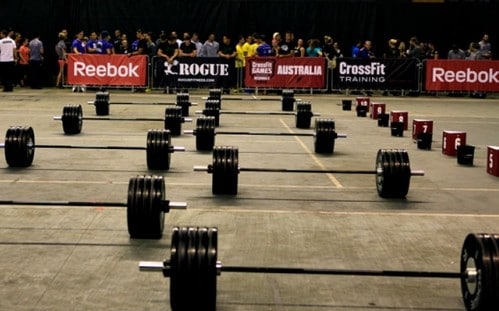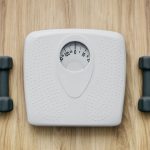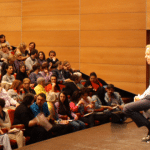By Khan Porter
Dubbed the king of all movements, the deadlift’s weight moving, strength building and muscle gaining potential have seen the ‘grip and rip’ a part of most gym goer’s programs at some stage. However, could this strength building sovereign actually be doing you more harm then good? Little compares to the deadlift in terms of a posterior-chain strength and muscle developer. This monster movement recruits the glutes, quads, hamstrings, calves, back, arms and core and usually allows the largest loads to be lifted across all these muscled groups. By using so many muscles in one movement, the deadlift has a massive impact on the bodies central nervous system (CNS), and endocrine system, which is both a blessing and a curse. Through the firing of so many motor neurones (signals from the brain that tells the muscles to contract and work) and the subsequent recruitment of such a high number of muscle fibres, as is needed in such a big movement, a heavy deadlift leaves the body extremely fatigued. It’s said this fatigue can take between 3-7 days to recover from, thus leaving lifters, slower, less explosive and more generally fatigued overall. Something I’ve also found from my own personal experience. However the hormonal awesomeness that follows a heavy deadlifting session is pretty hard to beat from a muscle building and fat stripping point of view. The deadlift significantly boosts testosterone, IGF-type 1 and growth hormone in the muscles through the disruption of such a high number of muscle fibres. These anabolic (tissue building) hormones help build muscle and strip fat (providing your diet is on track of course). Recovering from such a taxing movement also causes a significant rise in a persons resting metabolic rate, meaning you’re potentially burning fat at rest long after your workout ends. It’s almost as if the deadlift is too good for some athletes! It builds muscle and strength like few other movements so for pure strength or physique athletes (i.e. powerlifters or bodybuilders) it’s probably a no brainer as to whether to deadlift or not. However for the more rounded athlete (i.e. a rugby player) or recreational lifter/fitness enthusiast (CrossFitter), I would advise against doing them too often. The deadlift is also a fairly advanced movement and it requires exceptional control of both the pelvis and spine (core) as well as an ability to sequentially engage the right muscles in order to execute the movement properly. As a strength coach and personal trainer I’ve found that any movement in which a heavy load is pulled from the floor, (deadlifts, cleans, snatches etc.) has the greatest potential for injury, as many lifters lack the mobility, dexterity and kinesthetic awareness to perform the lift correctly and generally end up pulling with their spines in pretty shitty positions, especially as the load increases. That said I would never tell an athlete drop the deadlift all together (unless they have a lower back injury) but rather to reduce the frequency at which they are practicing the movement. There are a myriad of other ways to strengthen your posterior chain, such as back extensions, glute ham developers, good mornings, full squats and Olympic weightlifting – which will also develop your speed and power to a far greater extent. Personally I’ve found that dropping the heavy deadlift all together, (for the last 8 months or so) and focusing on Olympic lifting and squatting 2-3 more, whilst occasionally incorporating a light to moderate deadlift in my conditioning work, has had a great effect on my training. Having two bulging discs in my lower back as a result of a rugby training injury meant that when I was deadlifting heavy regularly (once a week at least), I was also regularly in pain, which I attribute directly to pulling such heavy loads from the floor. Now, despite practicing the Olympic lifts several times a week, my lower back is rarely sore. Though I am still pulling from the floor in both the O-Lifts, they’re done with significantly lighter loads then a heavy deadlift, thus the potential for injury is greatly decreased. The set up position for the Olympic lifts also has the butt slightly lower then a deadlift and thus allows a greater amount of strength to be generated by the legs in the first pull from the floor, again lowering the potential for injury to the lower back. I still have all the athletes I coach perform the deadlift every few weeks, but generally never for less then 5 reps and often at light loads for speed. I’m also a huge advocate for having newer lifters (less then 2 years experience) practicing most of their Olympic lifts from the hang position, to a) minimises potential for injury from pulling from the floor and b) encourages greater speed under the bar and allow for greater emphasis on finishing the third pull without taking tension in the arms (pulling early) and have had great results and seen far less injuries when athletes are lifting on their own from advocating this.
In a nutshell
Deadlifts are unbeatable for building strength and muscle, but it takes a long time to fully recover from a heavy deadlifting session, thus athletes are often left feeling slower, less powerful and fatigued for 3-5 days following. Athletes that are looking to improve speed, power, conditioning and strength (sports people and CrossFitters) and recreational lifters looking to improve their fitness and stay injury free are probably better off focusing on the Olympic lifts (from the hang initially and working to pulling from the floor) and squatting more and only deadlifting every couple of weeks.
In conclusion
Like with any piece of advice on the internet, this is just an opinion, based on the research (both read and anecdotal) that I’ve done. If you’ve been deadlifting injury free for years and getting fitter, faster and stronger the whole time, keep deadlifting. If you love wrenching super heavy loads from the floor like a boss and can do it without hurting yourself, keep deadlifting. But if you find yourself getting a sore lower back, feeling smashed for days after a deadlift workout or want to get more out of your speed, power and conditioning training, maybe try dropping deads for a while and see what it does for you. Enjoyed this article? You can follow us on our FaceBook channel 180 Performance for more informative articles just like this one…






